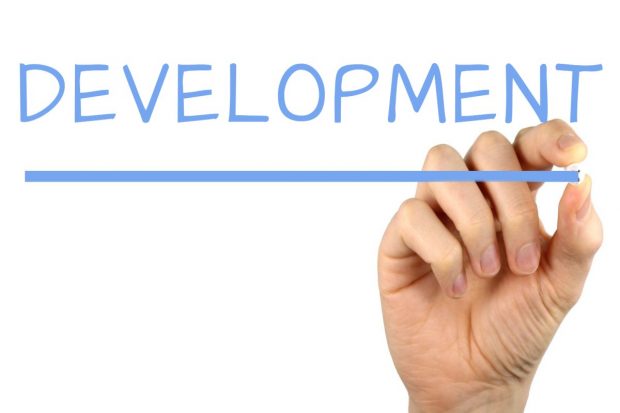
AIIB boosts common development of Asia, world
The China-sponsored Asian Infrastructure Investment Bank (AIIB) has approved $7.5 billion in loans to support infrastructure projects in 13 countries of six regions, including East Asia, Southeast Asia, South Asia, Central Asia, West Asia and Africa, driving almost $40 billion of capital into infrastructure projects over the past three years since its opening on Jan. 16, 2016. To date, the new-type multilateral development bank, with a mission to promote infrastructure connectivity, has expanded its membership from 57 founders to 93 approved members.
In the past three years, the AIIB demonstrated internationalism, normative operation and high standards in its governance structure, policy standards and operation mode, winning wide recognition in the international society. It received the top-level rating by three major credit rating agencies in the world and assigned a zero-risk weighting by the Basle Committee on Bank Supervision (BCBS), a body that serves as an influential arbiter for the best standards in financial regulation worldwide. As an important platform that promotes the building of a community of shared future for mankind, the AIIB will continue to inject new vitality to the regional and common development of the world.
In December 2018, the AIIB approved a loan of $400 million for a water supply program in Andhra Pradesh, India, aiming to provide safe drinking water through piped water supply to 3.3 million people in the region, where severe water pollution and poor water purifying equipment affected people’s health. The AIIB has approved nine loan projects in India including the water supply program, totaling over $2 billion. Most of these loans were used to improve the transportation, electricity supply, water supply, and other infrastructure-related areas, according to the AIIB. India is the largest borrower of the AIIB, and the loans have improved the infrastructure in the country, said Jagannath Panda, a researcher from India’s Institute for Defence Studies and Analyses (IDSA). He told People’s Daily that the Mumbai metro line 4, a project that received AIIB funding, will reduce the 35-percent amount of traffic in the downtown, thus greatly improving the city’s traffic.
Bangladesh is another country that suffers from outdated infrastructure, especially power shortages. The first loan granted by the AIIB to Bangladesh was aimed to improve power supply for the country – a $60-million capital that went to a greenfield 220-megawatt combined cycle power plant in Bhola island in the Barisal district of Bangladesh. Upon completion, the project will increase power generation by around 1,300-megawatt hours annually. The AIIB-funded power upgrade project will increase power supply and improve local industrial development and people’s livelihood in Bangladesh, where the severe power shortage is curbing the economic growth and the progress of poverty reduction, said Dr. Ahsan H. Mansur, Executive Director of the Policy Research Institute of Bangladesh (PRI). Among the AIIB-financed projects in Indonesia, the National Slum Upgrading Project had the most remarkable achievements, improving the livelihood for tens of millions of impoverished residents.
The project was officially launched by the Indonesian government in April 2016, aiming to improve the living conditions in targeted slums via upgrading urban infrastructures such as water supply, power supply, and roads. Two months later, the AIIB, forming a team with the World Bank, announced $433 million of financing for the project. Half of the capital was contributed by the China-sponsored organization. There are over 29 million Indonesians living in slums, according to the estimate of George Soraya from the World Bank who is in charge of the project.
More than 9.7 million impoverished people across the country will directly benefit from the slum upgrading project, and millions of other residents in Indonesia will also share the benefits. AIIB’s first loan project to the Philippines aims to improve flood management in selected areas of Metro Manila. The aging drainage system in the Philippine capital was built in the 1970s, and there always are traffic paralysis and casualties during the typhoon season between June and October each year when floods hit the city frequently. According to the plan of the AIIB, the project will upgrade 36 pumping stations and construct 20 new ones, rebuild urban waterways, and repair garbage treatment facilities and drainage pipelines. It will also house the relocated people. AIIB documents show that the project will cover 2,900 hectares, benefiting about 970,000 people from 210,000 households.
With AIIB’s loans, Tajikistan in Central Asia has boosted key projects including city roads and flyovers project in its capital Duschanbe, the Dushanbe-Uzbekistan Border Road Improvement Project and the Nurek Hydropower Rehabilitation Project. “These projects have directly changed the lives of local people and facilitated national development,” said Sayfullo Safarov, first deputy director of the Center for Strategic Studies under the President of Tajikistan. In recent years, Tajikistan has significantly improved its infrastructure by making use of AIIB’s loans. The AIIB has played an important role in Asia’s development, Safarov said, adding that the AIIB’s projects improving the poor infrastructure are conducive to stimulating the local development vitality.
By Yuan Jirong, Zhao Yipu & Zhou Hanbo
(People’s Daily)



